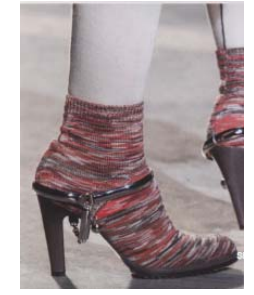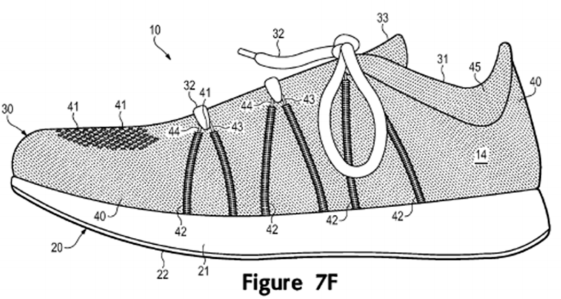Edited by Loni Morrow
On January 5, 2017, Skechers U.S.A., Inc. filed a petition with the Patent Trial and Appeal Board to institute an Inter Partes Review (IPR2017-00607) (“current IPR petition”) of two design patents owned by Nike, Inc.: D696,853 and D707,032. The design patents claim an ornamental design for a “Shoe Upper.” A representative figure is below:

The patents claim the portion of the shoe shown here:

The current IPR petition alleges that Nike’s Design patent is invalid as obvious over Nike’s own prior filings, including a European Community Design registration (RCD 0015), and two utility applications (US2010/0154256 and US2011/0192058). The current IPR petition comes on the heels of a prior IPR petition where Skechers attempted to invalidate D696,853, but the Board refused to institute trial. (See IPR2016-01043, paper 8) (“prior IPR”). In the prior IPR petition, Skechers relied on the same primary reference, RCD 0015 as in the current petition. IPR2016-01043, paper 1. A representative Figure from RCD 0015 is here:

In the prior IPR institution decision, the Board explained its refusal stating that RCD 0015 fails to create the same “visual impression as the claimed shoe upper.” IPR2016-01043, paper 8 at 16. The Board identified differences between RCD 0015 and the claimed design. For example, the Board noted that RCD 0015 does not include an inverted V (formed in a broken line) at the toe-most lace eyelet, and RCD 0015 has substantial visual contrast between the darker heel-most portion and the lighter toe-most portion of the shoe. Id. The Board also noted that the claimed “zig-zag” lines between the inverted Vs contribute significantly to the overall visual impression of the claimed design, and RCD 0015 includes visually distinct patterns between the inverted Vs. Id. at 17. Based on these differences, RCD 0015 did not create basically the same visual impression as the claimed design, and was, therefore insufficient to be a primary reference in an obviousness determination. Id. at 18. The Board also dismissed Skechers’ secondary references, seen here:

and here:

as being insufficiently related to the shoe and the shoe upper design of RCD 0015 to support the combination of references.
In the current IPR petition, Skechers relies on RCD 0015, arguing that the Board improperly focused on the wrong part of RCD 0015 when it noted the visual contrast between the darker heel-most portion and the lighter toe-most portion. IPR2017-00607, paper 1, at 2-3. Skechers also asserts that the Board gave too much weight to the lack of an inverted V under the toe-most eyelet. Id. at 3-4. Skechers asserts that, contrary to the Board’s findings in the prior IPR petition decision, there are portions of RCD 0015 that show a zig-zag pattern. Id. at 21. Finally, Skechers provides secondary references asserting that a designer of ordinary skill would add an additional loop to the toe-most eyelet of a shoe, as illustrated in Nike’s patent publication (US2010/0154256), shown below. Id. at 22-23.

The Patent Trial and Appeal Board has shown reluctance in the past to allow a petitioner a second bite at the apple, particularly where the petitioner relies on the same prior art that was raised in a prior petition. It will be interesting to see if Skechers can convince the Board that the Board erred in finding RCD 0015 does not “create basically the same visual impression” as the claimed design. IPR2016-01043, paper 8, at 18.

